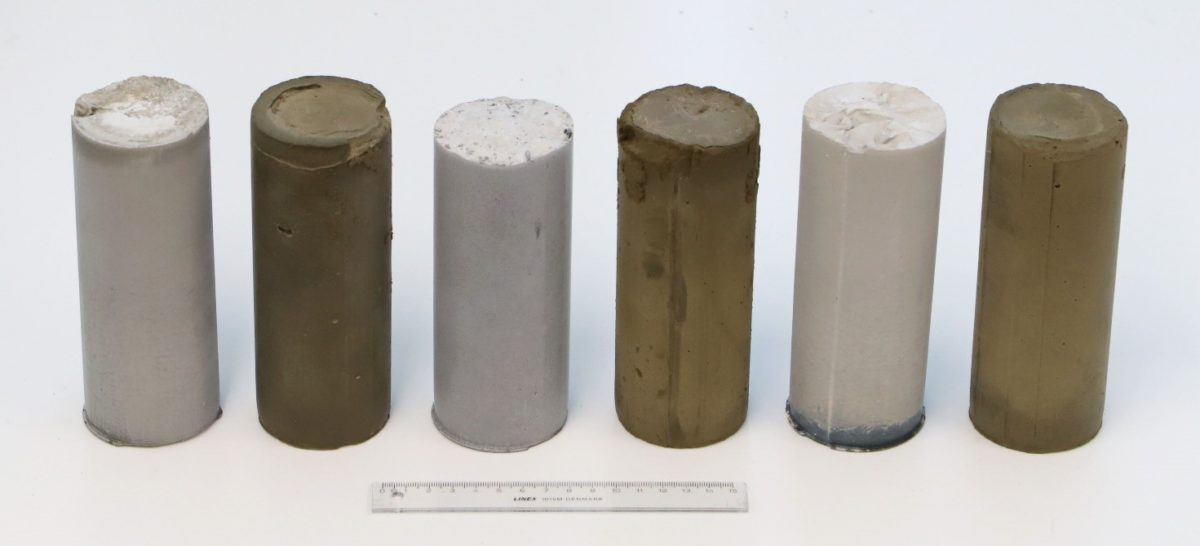Binder studies of cemented paste backfilling contribute to the circular economy of extractive waste
Competence development for mine backfilling technologies (KOVE PRO) project examines the utilization of extractive waste and of certain industrial side streams as a binder for cemented paste backfilling material to promote the circular economy and environmentally best solutions.
The production of mineral raw materials through mining is on the rise as electrifying transport and new technologies for energy production and storage require a huge amount of additional manufacturing materials. At the same time, an increase in mining means an increase in the amount of extractive waste.
Extractive waste consists mainly of waste rocks and process tailings. Tailings form when the ore is ground into fine-grained powder, and the grain fractions are separated from each other by various methods. Process fractions that do not contain recoverable elements or minerals generate tailings. They are often dumped into above-ground storage facilities. The utilization of this high-volume of extractive waste is in line with the concept of circular economy.
The Geological Survey of Finland (GTK) supports the advancement of the circular economy by participating in projects which aim to develop new applications for circular economy. Competence development for mine backfilling technologies (KOVE PRO) project studies the stabilization and utilization of tailings as Cemented Paste Backfill (CPB) material in underground mine facilities. CPB is a method of reducing the overall environmental impacts of mining, e.g. the need to the disposal of surface extractive waste, and the method also enables a more efficient recovery of the ore. In addition to the utilization of tailings, the project investigates the utilization of other industrial waste by-products, i.e. blast furnace slag from the steel industry and fly ash from the energy industry, as a binder instead of cement.
The KOVE PRO project is implemented by Savonia University of Applied Sciences, GTK and business partners. The reduction and replacement of the cement with secondary raw materials is studied in order to find the most economical and environmentally friendly backfilling recipes. The environmental suitability and durability of these new backfill materials are tested in simulated mine conditions. In addition, dewatering and pumping properties of the paste are studied during the project.
Traditionally, cement is used as a binder in cemented paste backfilling. Cement production consumes a lot of energy and water and produces considerable amounts of carbon dioxide. Due to the adverse environmental impacts associated with cement production there is a need for binders to replace cement in the mining industry. In the KOVE PRO project, the properties and behaviour of cement used in backfilling and cement substitutes are studied using and applying various research methods. The binder studies are implemented at GTK’s Research Laboratory in Espoo, Finland.
The composition of specimens prepared with different recipes and cured in a condition cabinet simulating tunnel conditions is traced mineralogically using quantitative X-ray diffraction (QXRD). In addition, a three-dimensional density map of the specimens is imaged using X-ray tomography (XCT). By comparing the QXRD results with the scanning electron microscope (SEM-MLA) data of GTK Mintec’s Mineralogy Laboratory in Outokumpu, it is possible to verify the identification and phase composition of the challenging phases formed during curing. Because the phase composition of the starting materials is also determined by these methods, it is possible to solve the phase compositional mass balance of the backfilling material before and after the curing reactions. Savonia University conducts compressive strength tests on specimens to characterize their technical properties. The compressive strength properties can be correlated with the observed changes in phase composition, texture and structure of the samples.
Our work is still in progress, but we have already obtained interesting preliminary results on the hardening and mineralogy of tailings and alternative binders. As a result, we hope to find combinations of materials that promote the circular economy, with suitable properties for the implementation of paste backfilling, possibly even without the use of cement.
Text
Neea Heino, Research Scientist, Circular Economy Solutions, neea.heino@gtk.fi
Pasi Heikkilä, Research Scientist, Circular Economy Solutions, pasi.heikkila@gtk.fi
Jukka Kuva, Research Scientist, Circular Economy Solutions, jukka.kuva@gtk.fi

As part of the study, the samples were filmed using X-ray tomography to obtain three-dimensional video footage of the samples. Video: Jukka Kuva, Geological Survey of Finland.
